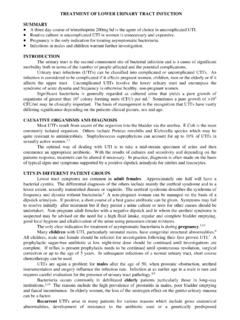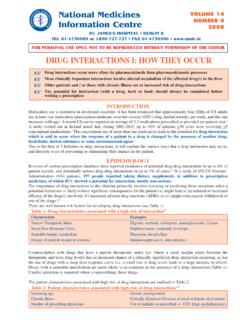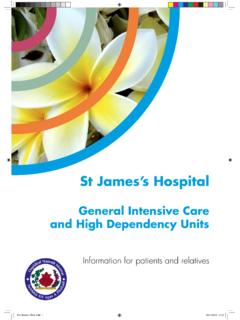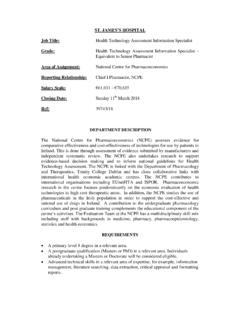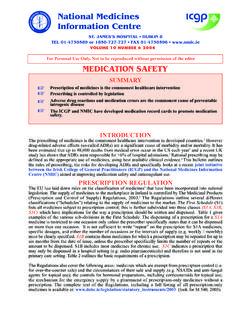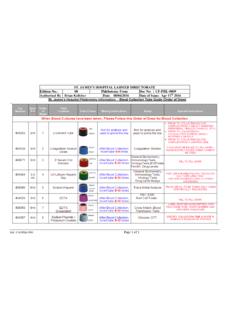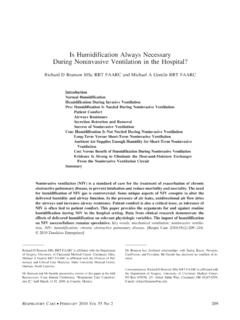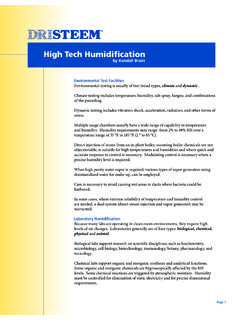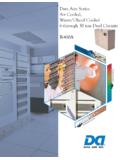Transcription of Tracheostomy Booklet - Internet
1 Tracheostomy Booklet Introduction This Booklet has been written to help you and your family to understand more about tracheostomies. It is hoped that the information included will answer some of your questions and reassure you about this part of your treatment. Not all information can be included in a Booklet of this size. After reading the Booklet , you are likely to have further questions about your treatment. The back page has been left blank so that you can document these questions. Your doctor or nurse will be happy to discuss them with you at your next visit.
2 What is a Tracheostomy ? A tracheotomy is an opening that is made through the skin in the front of the neck into the trachea windpipe). A Tracheostomy tube is inserted into this opening to assist your breathing. There are a number of reasons why a Tracheostomy may be necessary. These include: *After some operations on the head and neck area. *Blockage of the windpipe due to swelling, infection or other causes. *Some conditions requiring mechanical ventilation ( the use of a breathing machine) Tracheostomy Tube How long will the Tracheostomy tube be in place?
3 This varies from person to person. It depends on your medical condition and the reason a tube is needed. Most tracheostomies are temporary. Your doctor will talk to you about how long the tube will be needed in your situation. How will a Tracheostomy tube affect me? Physical Appearance Since a Tracheostomy tube can be seen on the front of your neck, it does alter your appearance. It may take some time to get used to your neck looking different. Cosmetically, some people find it helpful to wear a scarf or cravat around their neck.
4 There are also mock polo necked T shirts available from your speech therapist. Psychologically, it will help if you talk to your relatives and nurses about how you feel so that they can give you the support you need. Will my speech be affected? Initially yes. When the tube is first inserted you will not be able to speak because breathing through the Tracheostomy tube re directs air away from your vocal cords. This is temporary. If your voice box (larynx) is not affected by your condition, you will be able to speak using the techniques and attachments that will be given to you by the speech therapist.
5 Will I be able to eat? Usually yes. Many people can eat and drink with a Tracheostomy tube in place. You may find that certain foods and drinks are easier to swallow than others. Your dietician and speech therapist will work with you to find which foodstuffs are easiest for you. Other Physical effects Humidification: Normally the air we breathe in is warmed and moistened as it passes through our nose and mouth on the way to our lungs. This process humidification does not happen when air is inhaled through a Tracheostomy tube.
6 Therefore some external device needs to be used to add heat and moisture. There are a number of devices available. Your nurse will help you decide which is the most suitable for you. Clearing secretions:While your Tracheostomy tube is in place you may need help to clear secretions (sputum / phlegm) which would normally be swallowed or coughed out. This help suctioning involves passing a small suction tube into your Tracheostomy to suck out your secretions. It is performed by your nurse or physiotherapist, until such time as you are able to do so yourself.
7 Tracheostomy At Home Looking after your Tracheostomy at home Before you leave hospital, both you and your family will be taught how to look after your Tracheostomy at home. Also, your GP and local public health nurse will be available to support you at home. NOTE CLEANLINESS IS THE MOST IMPORTANT ELEMENT OF Tracheostomy CARE. ALWAYS WASH YOUR HANDS BEFORE AND AFTER HANDLING YOUR Tracheostomy TUBE Home equipment: When you go home with a Tracheostomy tube in place you may need one or more of the following pieces of equipment.
8 They are usually provided by your local health board. Suction machine Suction catheters Room humidifier Cleaning your Tracheostomy tube: Using the techniques that you are taught in hospital, Clean your inner cannula (inner tube) before settling to sleep at night, when you get up in the morning, and at any other time you feel it might contain secretions. Clean your stoma (neck opening) every morning, but more frequently if there are a lot of secretions. With the help of a second person change your Tracheostomy tapes whenever they get soiled Tapes are likely to need changing about every 1 2 weeks.
9 Suctioning: If you are able to cough out your secretions it may not be necessary to use your suction machine at home. If you are not able to cough out your secretions it is essential that you or a family member suction them out as instructed. Retained secretions can make it difficult for you to breathe, and increase your risk of getting a chest infection. The amount of suctioning required usually decreases substantially with time. Humidification: Humidification adds heat and moisture to the air you breathe.
10 This helps to prevent your airways from becoming irritated and your secretions from becoming dry and sticky. Good humidification is achieved by: using specific heat/moisture devices given while in hospital. increasing the humidity in the your environment by: using a room humidifier; having a hot bath or sitting in the steamy bathroom after a family member has had a bath!; boiling water and allowing it to steam up your room. Note: do not inhale steam directly as it may burn your airways! taking plenty of fluids especially water to ensure you do not become dehydrated.

